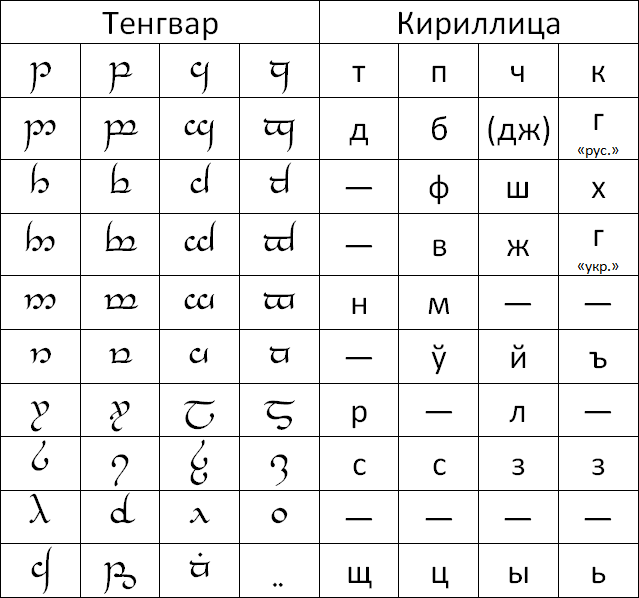Contents:


Total projected revenue from the Intangible Assets as provided to the project lender at the time of financial closure / agreement. This article is to help you understand the meaning of asset accounting. Jain Bros. acquired a machine on 1st July, 2010 at a cost of 14,000 and spent 1,000 on its installation. Show the Machinery Account on diminishing balance method for the year 2010 and 2011. Familiarize with the accounting treatment for change in the method of depreciation from Straight Line Method to Reducing Balance method.
What is amortization in accounting in simple words?
Amortization is an accounting method for spreading out the costs for the use of a long-term asset over the expected period the long-term asset will provide value. Amortization expenses account for the cost of long-term assets (like computers and vehicles) over the lifetime of their use.
To avoid the same, special care must be taken to keep finances up-to-date and to use a reliable accounting system. Companies implement these formulas to find out a specific aspect of their business effectively. Being a non-GAAP computation, one can select which expense they want to add to the net income. Amortization is the process of spreading a value over a period and reducing that value periodically. The word may refer to either reduction of an asset value or reduction of a liability . That lower interest rate can help the company pay off the loan faster.
What is amortization in simple terms?
A portion of every payment is for curiosity while the remaining amount is applied in the direction of the principal balance. Thus, the amount of depreciation is calculated by simply dividing the difference of original cost or book value of the fixed asset and the salvage value by useful life of the asset. A company considers different factors including the type of depreciation methods in order to calculate depreciation and account for the same in books. In financial modelling, EBITDA is typically used as a starting point for estimating unlevered free flow of cash. The earnings before interest, taxes, depreciation, and amortization attempt to display cash profit that is generated by the company’s operations.
What is an example of amortization?
Amortizing a loan
You have a $5,000 loan outstanding. If you pay $1,000 of the principal every year, $1,000 of the loan has amortized each year. You should record $1,000 each year in your books as an amortization expense.
Understand various methods of depreciation and learn advantages and disadvantages of such methods. Amortization refers to the discount of a debt over time by paying the identical quantity every interval, often month-to-month. With amortization, the cost quantity consists of both principal compensation and interest on the debt. Depreciation has two methods of computation – Written down value method and straight line method. Furthermore, depreciation is a non – cash expense as it does not involve any outflow of cash. Hence, depreciation as an expense is different from all the other conventional expenses.
Fixed-rate amortization
Both amortization and depreciation are ways to account for and spread the cost of an asset over the period of its useful life. The calculation of amortization and depreciation are both essential to record them as expenses on the financial statements and also for taxation purposes. Depreciation is calculated for tangible assets, and amortization is for intangible assets. But the accounting standards are different for depreciation and amortization.

These costs include freight and transportation, installation cost, commission, insurance, etc. So, as an asset moves towards the end of its useful life, the benefit gained out of such an asset declines. That is to say, highest amount of depreciation is allocated in the first year since no amount of capital has been recovered till then.
How is EBITDA Calculated?
Understanding procure to pay cycle and accounting document at each step. Asset can be transferred from one department to another department, from one plant to another plant, from one company code to another company code etc. Asset which can convert into cash or be consumed within one year is referred as current asset. Generally following factors are taken into consideration for calculation of depreciation. The first five terms I have understood since I studied accounts at college level but what is this Ammortization mean. After Incomes comes the Expenses section, where your accountant shows how your business spent the money it made.
What is an example of amortization of assets?
What Is an Example of Amortization? A company may amortize the cost of a patent over its useful life. Say the company owns the exclusive rights over a patent for 10 years, and the patent is not to renew at the end of the period.
Consult a professional before relying on the information to make any legal, financial or business decisions. Khatabook will not be liable for any false, inaccurate or incomplete information present on the website. The cost is usually spread out over many years when a business buys a fixed asset, and this is because the asset is expected to produce income for some years. For example, a business might purchase an office building and later move to a larger, more efficient one.
The amortization meaning in accounting with example assertion also expenses certain property as they’re used over time. Tangible or mounted belongings are written off in a course of known as depreciation, whereas intangible property are written off in a course of known as amortization. You’ll see that, over time, the amount of curiosity charged each month declines.
Amortization VS. Depreciation
Thus, the depreciable amount of an asset is charged to a fraction over different accounting periods under this method. EBIT means earnings (or net income/profit, which is the same thing) after deducting interest and taxes. EBIT can be determined on an income statement by starting with the Earnings Before Tax line and adding back any interest expenses the company may have incurred. Shows a company’s financial performance without taking into account its capital investments, including plant, property and equipment.

Depreciation is a term used to expense the gradual decrease in value of a physical asset throughout its useful life. These tangible or fixed assets include real estate property, buildings, plants, machinery, equipment, vehicles, furniture, and other tangible items that the company owns. Amortization is known as an accounting technique used to periodically reduce the book value of a loan or intangible asset across a set period. In relation to a loan, amortization concentrates on casting out loan payments over time. When applied to an asset, amortization is slightly similar to depreciation. Under this method, the annual charge for depreciation decreases from year to year, so that the earlier years suffer to the benefit of the later years.
Since depreciation is a non-cash transaction, a cash flow analysis requires the inclusion of net income with an add-back for any depreciation recognized as expenses during the period. Depreciation and amortisation (D&A) are based on the company’s prior investments rather than its current operating performance. Companies put money into long-term fixed assets that depreciate over time. The depreciation expense is based on the deterioration of a portion of the company’s tangible fixed assets. Patents and other intangible assets are amortised because they have a finite useful life before expiration. You record every fee as an expense, not the entire cost of the loan at once.
The useful life of an asset is the period over which an asset is expected to be available for use by an entity, or the number of production or similar units expected to be obtained from the asset by the entity. Depreciation has been defined as ‘the diminution in the utility or value of an asset, due to natural wear and tear, exhaustion of the subject-matter, effluxion of time accident, obsolescence or similar causes’. Depreciation caused by any one of the last mentioned factors often is described as external depreciation, to distinguish it from the natural wear and tear of assets which is known as internal depreciation. This technique is usually utilized in an introductory period earlier than mortgage funds exceed interest and the mortgage turns into self-amortizing. The term is most frequently used for mortgage loans; corporate loans with unfavorable amortization are called PIK loans.

The value of assets owned by the business is subject to reduce every year – this decrease in value is called depreciation. The money earned from Other Incomes will never be as much as the main revenue, but it is a good source of supplementary income for a business. A business might earn money from sources other than the sale of goods and services. Reliance’s income statement also called its Unaudited Condensed Financial Results, is released on its investor relations site.
Amortization vs. Depreciation: What’s the Difference? – Investopedia
Amortization vs. Depreciation: What’s the Difference?.
Posted: Sat, 25 Mar 2017 18:22:09 GMT [source]
Determination of the useful life is a matter of estimation and is normally based on various factors including experience with similar type of assets. Several other factors like estimated working hours, production capacity, repairs and renewals, etc. are also taken into consideration on demanding situation. Is a measure of wearing out, consumption or other loss of value of a depreciable asset arising from use, effluxion of time or obsolescence through technology and market changes. Depreciation is allocated so as to charge a fair proportion of the depreciable amount in each accounting period during the expected useful life of the asset. Depreciation includes amortisation of asset whose useful life is predetermined’. Amortization refers to capitalizing the value of an intangible asset over time.
This schedule is sort of useful for properly recording the curiosity and principal components of a mortgage payment. Amortisation is fundamentally used for writing off the value of these intangible assets and loans over a period of time. It is extremely important to understand the intrinsic meaning of amortisation as it is widely used for accounting and taxation purposes. It is not the same as depreciation and is used separately to ascertain the value of assets, purchases and even the profits that large organizations earn after taxes. To calculate amortization, you also need the time period of the mortgage and the fee amount every period. Amortization is an accounting term that refers back to the process of allocating the price of an intangible asset over a time period.
Torrid Reports Fourth Quarter and Fiscal 2022 Results – businesswire.com
Torrid Reports Fourth Quarter and Fiscal 2022 Results.
Posted: Thu, 23 Mar 2023 20:05:00 GMT [source]
Hence, EBITDA is an efficient way of measuring the core profit trends of a firm as it has extraneous factors. Nonetheless, to arrive at a more comprehensive financial analysis, both investors and firm owners need to use other, more encompassing financial metrics. Many business owners use it to mask their poor financial judgment and finance-oriented shortcomings. EBITDA only accounts for those expenses which are required to keep a firm’s day-to-day operations running. The risk of variables which often affects financial variables, including capital investment, is significantly reduced. Notably, even the slightest mistake in the values of these components would impact a firm’s profitability significantly.
- Fixed assetssuch as plant and machinery, equipment, etc into the expense.
- Amortization was excluded because it measured the cost of intangible assets acquired in some earlier period,rather than current expenditure of cash.
- Depreciation is calculated for tangible assets, and amortization is for intangible assets.
- The land is the main special case which cannot be depreciated as the estimation of land acknowledges with time.
- Amortization is non cash item means it does not result in any cash outflow or inflow.
Therefore, despite having a higher https://1investing.in/, XYZ Private Limited has a lower EBITDA margin when compared to ABC Private limited. It means ABC Private Limited is financially more efficient and hence more likely to be favored by potential investors. Firm with a relatively larger margin is more likely to be considered a company with significant growth potential by professional buyers.
- We must decide reasonable depreciation for the current bookkeeping time frame as per a fixed asset’s valuable life, unique cost, depreciation method and neighbourhood guidelines.
- In this scenario, amortisation refers to dividing the loan amount into instalments until it is completely paid off.
- Being a non-GAAP computation, one can select which expense they want to add to the net income.
- Electrical Machinery, X-ray and electrotherapeutic apparatus and accessories thereto, medical, diagnostic equipments, namely, Cat-scan, Ultrasound Machines, ECG Monitors, etc.
- Amortization is a concept used by accountants to spread the cost of intangible assets over time.
Our Goods & Services Tax course includes tutorial videos, guides and expert assistance to help you in mastering Goods and Services Tax. ClearTax can also help you in getting your business registered for Goods & Services Tax Law. “Continuous process plant” means a plant which is required and designed to operate for twenty-four hours a day.
This value is generally subtracted from the asset cost to determine the amount by which it can be depreciated. The value of an item when it is brand new and after a period of use, sees a gradual reduction based on the period it has been used for. Tangible assets also have a residual value after the end of their useful life. The difference between this residual value and the cost of the asset is the depreciation.
How amortization is calculated?
Starting in month one, take the total amount of the loan and multiply it by the interest rate on the loan. Then for a loan with monthly repayments, divide the result by 12 to get your monthly interest. Subtract the interest from the total monthly payment, and the remaining amount is what goes toward principal.

Comments are closed.